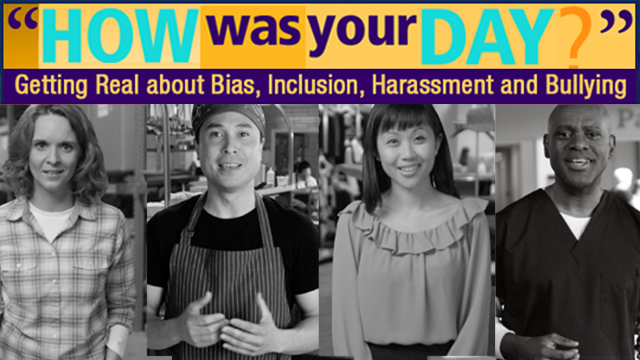How Good Intentions Can Go Awry: Creating a Harassment-Free Environment

Eliminating Harassment in the Workplace
Nearly a year and a half after the launch of the #TimesUp movement, sexual harassment prevention has been pushed to trhe forefront of corporate initiatives. There are more infographics, L&D programs, and spotlights around the topic than ever before. But what about harassment that isn't sexual in nature?
The Whole Picture
While sexual harassment (rightfully) generates a significant amount of attention, it’s only part of the whole picture. In fact, the Equal Employment Opportunity Commission (EEOC) defines workplace harassment as:
… any unwelcome verbal or physical behavior that is based on race, color, religion, sex (including pregnancy), gender/gender identity, nationality, age (40 or older), physical or mental disability, or genetic information.
Therefore, it’s important to continue pushing toward a holistic understanding of the issue (both sexual and non-sexual) especially when the boundaries and definitions vary from state to state. Failing to do so can have drastic consequences on an organization, where even the most well-intentioned behaviors could become potential catalysts.
The Tale of Mark & Sheila
Imagine this. You have a dear friend—let’s call him Mark. Mark is the kind of person you’d want to bring home to a family barbeque—a well-educated high-performer, who seems to have nailed down the work/life balancing act. Just last year he and his wife welcomed their beautiful baby girl into the world, and since then Mark has taken up an enviably natural disposition towards fatherhood.
Mark has a coworker—let's call her Sheila. Sheila is a dynamo, and as one of the top consultants at the firm, she’s on an expedited track towards Partnership. This year, she’s been chosen to spearhead a company-wide inclusion & diversity initiative. To top it all off, she is also expecting her first child later this year; and, similar to Mark, if her parenting skills remotely mimic her ability to nurture a stellar career, saying she’d make a fine parent would be a drastic understatement.
2019 is a big year for Sheila in all facets of her life. And within those facets, she is determined to maintain her momentum. Luckily, both of Sheila’s parents are retired and live nearby, allowing her and her partner to get back into the swing of work a little sooner than “normal.”
Mark found out about Sheila’s plans for a short maternity leave one day at a team lunch.
He was sharing an anecdote about how his wife decided to extend her maternity leave, “… I mean, new moms require at least six weeks to fully recover from the physical effects of giving birth… She needed time to mentally heal, to bond with the baby, adjust to being a new mom, ya know?"
“How awesome her company’s being so flexible!” Sheila chimed in.
“How long are you taking off, Sheila?” another coworker asked.
“I think we decided on 2-weeks of actual leave, 2-weeks remote, and then transitioning from part-time to full-time over the following weeks.”
“Ambitious!” Mark chuckled.
“Well, unfortunately, this inclusion initiative isn’t going to run itself.” Sheila said matter-of-factly.
And that was it. Lunch commenced as normal, and everyone went back to chatting about their latest Netflix binges and dream vacation destinations.
When Sheila got back to her desk, she was surprised to find an email from Mark. It was a link to an article titled Know Your Rights: Everything Expecting Mothers Need to Know about Maternity Leave in the U.S. with a message that read:
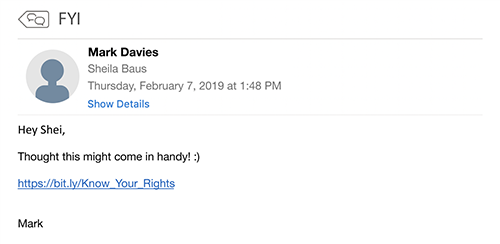

Sheila wrote back:
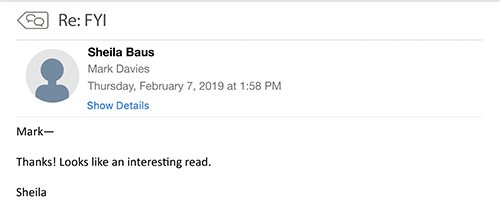

Sheila swallowed the lump of annoyance in her throat as she hit “Send” thinking to herself, He’s just trying to help.
Over the following weeks, Sheila was greeted with regular (and unsolicited) emails from Mark on “newbie parenting tips,” and he frequently stopped her in the halls with follow-up questions on whether she decided to extend her maternity leave:
“So have ya’ talked to HR yet?” Mark whispered one day on their way to a meeting.
“Not yet.” Sheila forced through a gritted smile.
Mark even went out of his way to congratulate Sheila on her 3rd trimester, saying that she was "glowing,” that the 3rd trimester is “a whole new ballgame,” and how his wife actually started working remotely 1-day a week during “the final stretch” so she could “take it easy on her body.”
For Sheila, the final straw came during a quick coffee break with Mark.
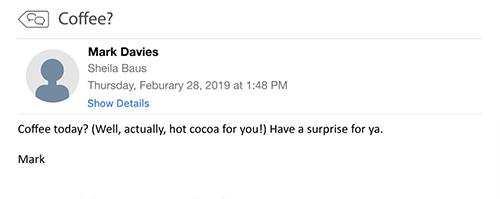

They were sitting and sipping their beverages when Mark disclosed his “Surprise.”
“You what?!” Sheila spluttered, almost spilling her hot cocoa.
“Yeah! I thought it might be helpful to have some stuff taken off your plate… You know, through the transition and all…”
“You emailed leadership about taking me off the inclusion & diversity project?” Sheila was nearing her boiling point.
“Not taking you off, Shei. Just having someone cover you while you’re out… So you can focus on the baby… I haven’t heard back yet—I mean—I can talk to them again if you’d like—”
“Mark—It. Is. Not. Your. Place.”
With some difficulty, Sheila stood up, grabbed her bag, and stormed out, leaving Mark looking as if he’d been struck in the face.
The Grey Area
While this example may paint a lovely shade of grey as Mark truly had the best intentions, let’s assume his incessant back-seat parenting was upsetting Sheila to the point where she was worrying about work and having trouble sleeping. Does Mark’s behavior qualify as “harassing conduct”?
For behavior to qualify as potential harassment, it must be severe and/or pervasive enough to interfere with one’s ability to do their job. Given the frequency of his “advice” and emails, Mark’s actions might be considered pervasive. But were they severe? And, more importantly, did they interfere with Sheila's ability to do her job? Additionally, since Sheila’s pregnancy qualifies her as a “protected class," Mark’s behavior rides a very fine line between “harassing conduct” and a general nuisance.
What Can Organizations Do to Build a Harassment-Free Environment?
Be Proactive
According to the U.S. Department of Labor (DOL), the most effective way to move towards a harassment-free environment is to treat harassing conduct as misconduct, “… even if it does not rise to the level of harassment actionable under the law.” In other words, even if behavior—like Mark’s—doesn’t officially qualify as harassment, it was bothersome enough to potentially disrupt the work of the receiving party (i.e. Sheila), thus warranting the same action as misconduct (i.e. their manager should put a stop to it).
The ultimate goal of creating a Harassing Conduct Policy is for organizations to eliminate harassing or bothersome conduct before it gets severe enough to violate the law.
Manage Bias
As the story of Mark and Sheila demonstrates, there are times when a person's behavior can be construed as harassing conduct despite their good intentions. In cases like these, training on unconscious bias can be helpful.
Mark genuinely thought he was being a supportive colleague. But that doesn’t deter from the fact that it drove Sheila absolutely bonkers. While Mark’s actions were seemingly an innocent extension of his desire to help, they do demonstrate a bias as to what Mark believes a new mother should do after giving birth. This bias led him to repeatedly conduct himself in a manner that was negatively perceived. Sheila wanted to return to work early and had spent a lot of time deliberating the pros and cons of doing so—a fact that Mark was not aware of.
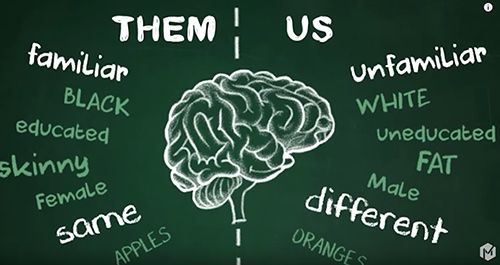

The reality is, we cannot assume something that works for us will work for anyone else. This may sound like a basic concept; however, it often falls to the wayside due to the pervasive work of unconscious bias. The minute we project our own opinions, experiences, and beliefs (regarding personal matters) on others, we do them, ourselves, and our companies a disservice. We limit productivity by distracting from the work at hand, and in some cases—like Mark and Sheila’s—prevent others from doing their best work.
It's About Impact, Not Intent
In the words of another female dynamo:
“At the end of the day people won't remember what you said or did, they will remember how you made them feel” –Maya Angelou
The same idea applies to creating a harassment-free environment. At the end of the day, it's not about our intentions; it's about noticing the impact of our words and actions, observing how we come across, and then changing our behavior when we realize it’s being perceived poorly.
The concepts of overcoming unconscious bias, preventing harassing behaviors, and building a respectful workplace are powerfully portrayed in Media Partner’s award-winning program “How Was Your Day”? Be among the growing number of organizations that use this training to help create a harassment-free environment. Facilitator-led and online self-paced learning versions available.

